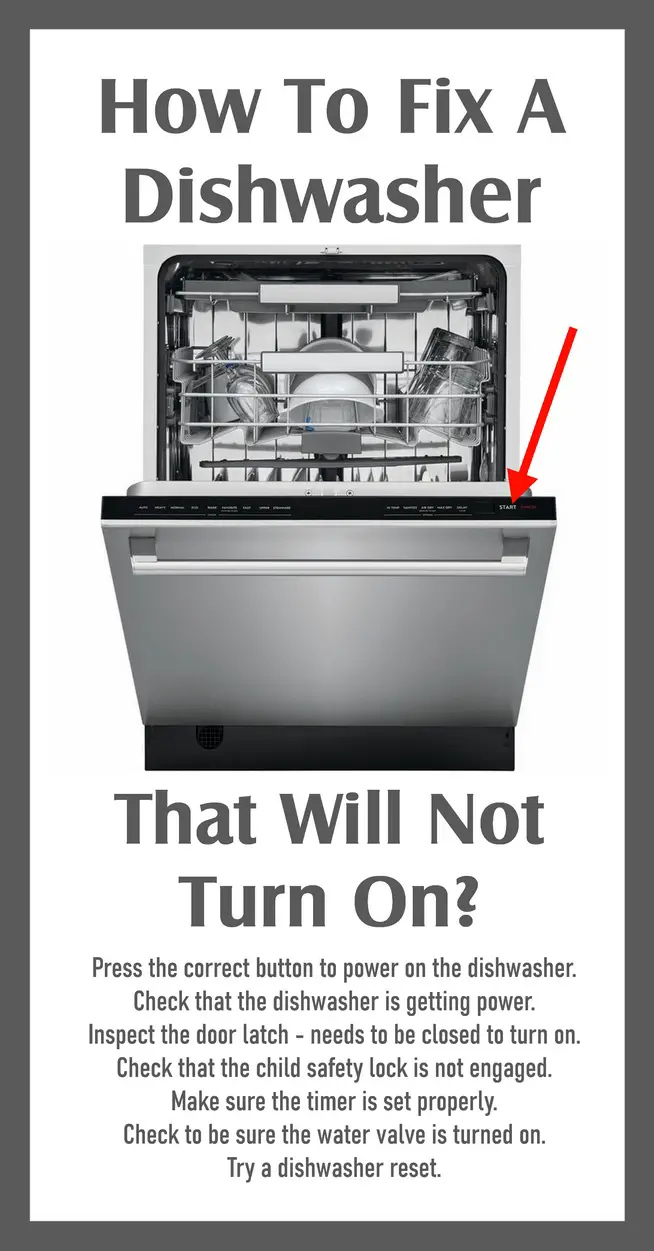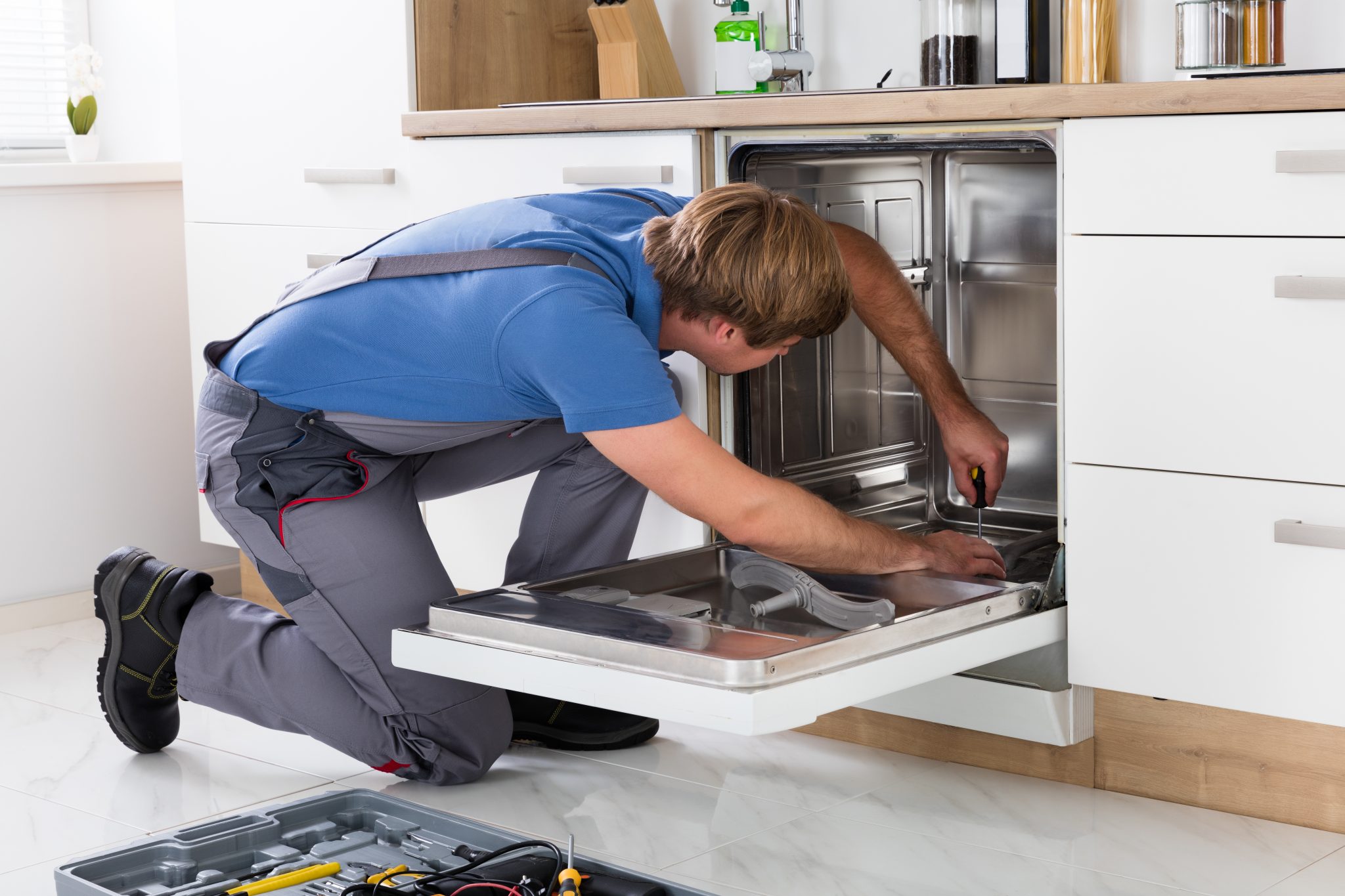If you're experiencing an overflow of water from your dishwasher into the sink, it can be frustrating and messy. Not only does it create a mess in your kitchen, but it can also cause damage to your floors and cabinets if left untreated. However, with a little know-how and some troubleshooting, you can fix this issue and have your dishwasher running smoothly again.How to Fix a Dishwasher That Overflows Into the Sink
The first thing you should do when your dishwasher is overflowing is to check the drain hose. This hose is responsible for draining the water from your dishwasher into the sink or garbage disposal. Make sure the hose is connected securely and that there are no kinks or clogs in the line. You can also try running a small amount of water through the hose to see if it is draining properly. If you notice any issues with the drain hose, such as cracks or clogs, you will need to replace it with a new one to prevent any further overflow problems.1. Check the Drain Hose
The drain valve is a small part located near the drain hose that controls the flow of water from the dishwasher. If this valve becomes stuck or damaged, it can cause water to back up and overflow into the sink. To check the drain valve, you will need to remove the bottom rack of your dishwasher and locate the valve. Make sure it is clean and free of any debris or buildup. If it is damaged, you will need to replace it.2. Inspect the Drain Valve
Most dishwashers have a filter that prevents food and other debris from entering the drain and causing clogs. If this filter becomes clogged, it can cause water to back up and overflow into the sink. To clean the filter, remove it from the bottom of the dishwasher and rinse it under running water. If it is heavily clogged, you may need to use a brush or toothpick to remove any stubborn debris.3. Clean the Filter
The air gap is a small device located next to your sink that prevents dirty water from the sink from entering your dishwasher. If this becomes clogged or blocked, it can cause water to back up and overflow into the sink. To check the air gap, remove the cover and clean out any debris that may be blocking it. If the air gap is damaged, you will need to replace it.4. Check the Air Gap
The float switch is a small mechanism located inside the dishwasher that controls the water level. If this switch becomes stuck or damaged, it can cause your dishwasher to overfill and overflow into the sink. To check the float switch, you will need to remove the bottom rack and locate the switch. Gently move it up and down to see if it is stuck. If it is damaged, you will need to replace it.5. Adjust the Float Switch
If none of the above solutions have solved the problem, there may be an issue with the dishwasher's pump. The pump is responsible for draining the water from the dishwasher, and if it becomes damaged or clogged, it can cause water to back up and overflow into the sink. To check the pump, you will need to remove the bottom rack and locate the pump, usually at the bottom of the dishwasher. Make sure it is clean and free of any debris. If it is damaged, you will need to replace it.6. Check the Pump
If your dishwasher has not been cleaned in a while, it may be causing the overflow issue. Food particles, grease, and other debris can build up in your dishwasher and cause clogs. To prevent this, run a cleaning cycle with a dishwasher cleaner or a mixture of vinegar and baking soda. This will help to remove any buildup and keep your dishwasher running smoothly.7. Run a Cleaning Cycle
If you have tried all of the above solutions and your dishwasher is still overflowing into the sink, it may be time to call in a professional. A plumber or appliance repair technician will be able to assess the problem and make any necessary repairs. This may cost you some money, but it will save you from further damage and frustration in the long run.8. Call a Professional
To prevent any future overflow issues, it's important to practice preventative maintenance on your dishwasher. This includes regularly cleaning the filter, running a cleaning cycle, and checking for any clogs or damage. It's also a good idea to avoid putting large food particles or greasy dishes into the dishwasher to prevent clogs.9. Preventative Maintenance
The Benefits of a Kitchen Sink Dishwasher Overflow

Maximizing Space and Efficiency
 The kitchen is often considered the heart of the home, and for good reason. It's where we gather to cook, eat, and spend time with our loved ones. However, with all of the activities that take place in this space, it can quickly become cluttered and overwhelming. That's where a kitchen sink dishwasher overflow comes in.
Utilizing every inch of space in your kitchen is crucial, and a kitchen sink dishwasher overflow can help you do just that.
By installing a dishwasher in your kitchen sink, you'll free up valuable counter and cabinet space that would otherwise be taken up by a traditional dishwasher. This allows for a more open and organized kitchen, making meal prep and clean up a breeze.
The kitchen is often considered the heart of the home, and for good reason. It's where we gather to cook, eat, and spend time with our loved ones. However, with all of the activities that take place in this space, it can quickly become cluttered and overwhelming. That's where a kitchen sink dishwasher overflow comes in.
Utilizing every inch of space in your kitchen is crucial, and a kitchen sink dishwasher overflow can help you do just that.
By installing a dishwasher in your kitchen sink, you'll free up valuable counter and cabinet space that would otherwise be taken up by a traditional dishwasher. This allows for a more open and organized kitchen, making meal prep and clean up a breeze.
Convenience and Versatility
 One of the main benefits of a kitchen sink dishwasher overflow is the convenience it provides. Traditional dishwashers require you to load and unload dishes from a standing position, which can be a strain on your back and shoulders. With a kitchen sink dishwasher overflow, you can easily load and unload dishes at a more comfortable height, reducing strain and making the task much easier.
Moreover, a kitchen sink dishwasher overflow offers versatility in terms of design and placement.
These dishwashers can be installed in various sink sizes and configurations, allowing you to choose the best option for your kitchen layout. They can also be easily removed and reinstalled in a new location if you decide to remodel your kitchen.
One of the main benefits of a kitchen sink dishwasher overflow is the convenience it provides. Traditional dishwashers require you to load and unload dishes from a standing position, which can be a strain on your back and shoulders. With a kitchen sink dishwasher overflow, you can easily load and unload dishes at a more comfortable height, reducing strain and making the task much easier.
Moreover, a kitchen sink dishwasher overflow offers versatility in terms of design and placement.
These dishwashers can be installed in various sink sizes and configurations, allowing you to choose the best option for your kitchen layout. They can also be easily removed and reinstalled in a new location if you decide to remodel your kitchen.
Efficient and Eco-Friendly
 Aside from the convenience and space-saving benefits, a kitchen sink dishwasher overflow is also an eco-friendly option. Traditional dishwashers typically use more water and energy than a kitchen sink dishwasher overflow. By using less water and energy, you'll not only be saving money on your utility bills, but also reducing your carbon footprint and contributing to a more sustainable future.
Additionally, a kitchen sink dishwasher overflow is more efficient in terms of water usage.
These dishwashers use a smaller amount of water, which is constantly circulated and filtered, resulting in cleaner and more hygienic dishes. This is especially beneficial for households with limited water supply or those trying to conserve water.
In conclusion, a kitchen sink dishwasher overflow offers numerous benefits for homeowners looking to maximize space, convenience, and efficiency in their kitchen. With its versatile design, eco-friendly features, and efficient water usage, it's a valuable addition to any household. So why not consider installing a kitchen sink dishwasher overflow in your home and see the difference it can make?
Aside from the convenience and space-saving benefits, a kitchen sink dishwasher overflow is also an eco-friendly option. Traditional dishwashers typically use more water and energy than a kitchen sink dishwasher overflow. By using less water and energy, you'll not only be saving money on your utility bills, but also reducing your carbon footprint and contributing to a more sustainable future.
Additionally, a kitchen sink dishwasher overflow is more efficient in terms of water usage.
These dishwashers use a smaller amount of water, which is constantly circulated and filtered, resulting in cleaner and more hygienic dishes. This is especially beneficial for households with limited water supply or those trying to conserve water.
In conclusion, a kitchen sink dishwasher overflow offers numerous benefits for homeowners looking to maximize space, convenience, and efficiency in their kitchen. With its versatile design, eco-friendly features, and efficient water usage, it's a valuable addition to any household. So why not consider installing a kitchen sink dishwasher overflow in your home and see the difference it can make?



























